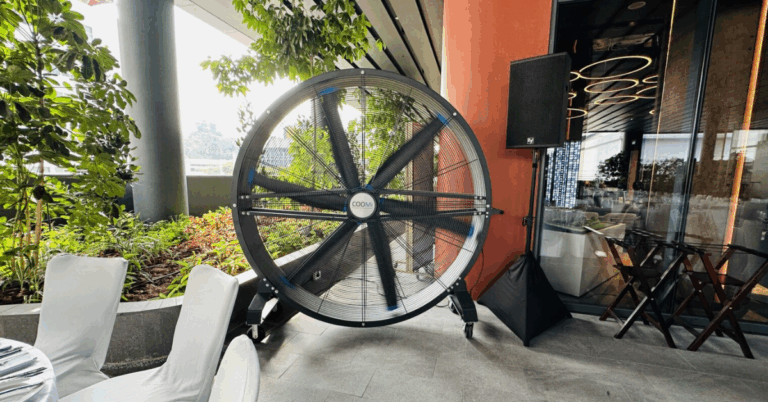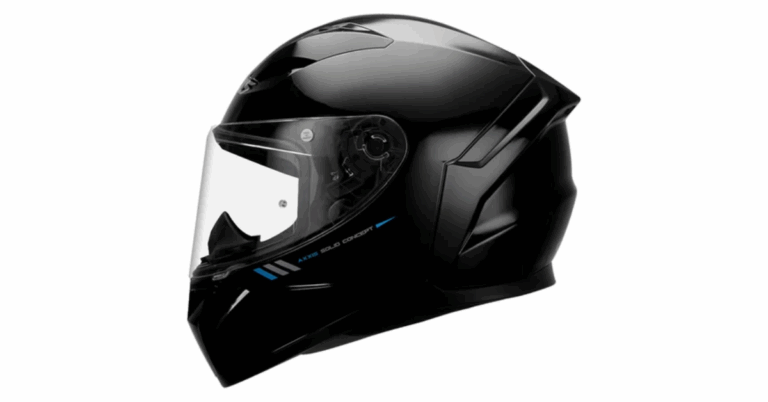Harnessing Airflow: The Role and Benefits of Commercial Ceiling Fans
In modern commercial environments be it in malls, convention halls, gyms, airports, or large retail stores the integration of a well-designed Commercial Ceiling Fan system serves not just as a comfort measure, but as a strategic tool for energy efficiency, air circulation, and occupant well-being. Such fans are engineered to move large volumes of air slowly, disrupting stagnant air layers and mitigating temperature stratification. In spaces with high ceilings, HVAC systems alone often struggle to maintain uniform temperature and airflow; commercial ceiling fans help bridge that gap, improving thermal comfort while reducing operational energy costs.
Understanding Commercial Ceiling Fans
Commercial ceiling fans (also called HVLS fans when large) differ markedly from residential fans in scale, design, and purpose. Key distinctions include:
-
Blade Span & Air Volume
Commercial models commonly span anywhere from 2 meters to over 7 meters. Their large diameter enables them to distribute airflow across vast floor areas. -
Low Rotational Speed & High Air Volume
Unlike household fans that spin fast over a small area, commercial units operate slowly but push large volumes of air, creating a gentle, sweeping breeze rather than a direct gust. -
Structural & Mechanical Robustness
These fans are designed to handle heavy-duty duty cycles and must meet stricter structural and safety standards—especially in settings with high ceilings or open spans. -
Intelligent Control & Integration
Many commercial ceiling fans can be integrated with building management systems (BMS), controlled via variable speed drives, occupancy sensors, or tied into HVAC logic. -
Energy Efficiency & Use Synergy
Because they assist or complement HVAC systems rather than replacing them, commercial ceiling fans can be tuned to work in conjunction, reducing heating or cooling loads and improving overall energy usage.
Why Commercial Spaces Need Ceiling Fans
1. Improving Thermal Comfort & Air Mixing
In large rooms with high ceilings, warm air tends to rise and stagnate, contributing to a phenomenon known as stratification. This results in a vertical temperature gradient—cooler near the floor, warmer overhead. Commercial ceiling fans help by mixing the air, pushing down warmer air, and distributing cooler air more evenly. This reduces hot and cold spots and enhances occupant comfort.
2. Reducing HVAC Load & Energy Costs
By aiding in air circulation, these fans allow HVAC systems to operate more efficiently. In cooling mode, the breeze effect helps occupants feel cooler even with slightly higher ambient temperatures. In heating mode, a gentle downward airflow re-circulates warm air that has risen, reducing heating system workload. This synergy can lead to reduced energy consumption and lower utility bills.
3. Better Indoor Air Quality
High-occupancy zones like retail floors, auditoriums, or fitness centers need effective ventilation to reduce humidity, odors, and airborne contaminants. A properly sized commercial ceiling fan helps maintain steady airflow, discourage stagnation, and support fresh air distribution—helpful for hygiene, odor control, and occupant health.
4. Noise and Operating Cost Considerations
A well-engineered commercial ceiling fan is often quieter in operation compared to several smaller fans or extended HVAC ducting and blowers running at high capacity. Because commercial fans typically use efficient motors (often with brushless DC or other energy-efficient technologies), their operating cost is comparatively lower for the airflow delivered.
5. Aesthetic & Architectural Integration
In large open spaces, a commercial ceiling fan can serve as a functional design element. Sleek, modern styles or concealed motor housings allow these fans to integrate into sophisticated architectural interiors while fulfilling a critical functional role.
Key Design & Specification Factors
1. Ceiling Height & Clearance
Commercial ceiling fans require sufficient overhead clearance to operate safely and effectively. Many systems are tailored for ceilings of at least 4 meters. The mounting height, blade tip clearance, and permission for maintenance access must all be considered.
2. Coverage Area & Fan Count
The area to be covered determines the number and spacing of fans. A single large-diameter fan might serve a wide zone, but for extremely broad expanses multiple fans may be needed with overlapping airflow patterns to avoid dead zones.
3. Air Delivery & CFM (Cubic Feet per Minute) / CMH (Cubic Meters per Hour)
Manufacturers rate commercial fans by their volumetric airflow. The required CFM (or CMH) depends on occupant density, space volume, cooling or heating demands, and ventilation goals.
4. Motor & Drive System
Reliable, efficient motors with variable speed drives (VSD/ VFD) allow for precise control. Brushless DC (BLDC) motors are increasingly common for their efficiency, controllability, and quiet performance. The drive must support dynamic control and integration with building systems.
5. Controls & Automation
Modern commercial fans often come with smart control capabilities:
-
Variable speed control
-
Occupancy-based activation / scheduling
-
Integration with HVAC / BMS logic
-
Remote monitoring and diagnostics
These features help optimize performance, reduce energy waste, and allow adaptive operation.
6. Safety & Codes
Given their size and suspended installation, commercial ceiling fans must comply with structural, electrical, and safety codes: vibration thresholds, structural mounting standards, wiring and protection, and, where applicable, local jurisdictional safety norms.
7. Maintenance & Accessibility
Ease of maintenance (blade balance, motor access, cleaning) must be factored. Since these fans are installed high overhead, simple access mechanisms, safety fall protection, and service protocols are essential.
Applications Across Commercial Settings
Retail Malls & Shopping Centers
With wide, open corridors and atriums, malls present a challenge for uniform airflow. Commercial ceiling fans encourage better air distribution, lower hot spot formation, and reduce reliance on high-speed HVAC blowers.
Gymnasiums, Fitness Centers & Sports Facilities
These settings see high physical activity and increased ventilation demand. Commercial ceiling fans help manage heat generated by occupants, distribute air even in lofty structures, and improve comfort without overtaxing HVAC systems.
Convention Centers, Auditoriums & Theaters
Large audiences, extended occupancy hours, and high ceilings make airflow management critical. Ceiling fans here can contribute to thermal balance during events, improve spectator comfort, and reduce HVAC energy consumption when attendance is less than full.
Industrial-Warehouse-Flex Spaces
Although slightly different needs apply (dust control, productivity, lower ambient precision), commercial ceiling fans are often used in warehouse environments to modulate temperature, reduce stratification, and improve worker comfort. When properly specified, these fans help stabilize internal temperatures, improving energy performance even in industrial contexts.
Hospitality & Hospitality Commons
Hotel lobbies, banquet halls, and large restaurants can benefit from quieter but effective air circulation. Fans sized and located appropriately help maintain comfort for guests without distracting noise or disrupting decor.
Performance Metrics & Energy Savings
Commercial ceiling fans are often evaluated in terms of energy cost per airflow delivered, efficiency (e.g. watts per 1,000 CFM), and system synergy with HVAC. Key metrics include:
-
Air-to-power ratio: Higher value means more airflow per unit of consumed power.
-
Stratification reduction: Ability to reduce vertical temperature difference.
-
HVAC offset potential: Extent to which the fan can allow adjustments in HVAC setpoints (for example, raise cooling setpoint by 1–2 °C or lower heating setpoint) without compromising comfort.
-
Operating cost vs. output: Energy consumed for the life of the system compared to benefits gained in reduced HVAC runtime, maintenance, and occupant satisfaction.
In many commercial installations, the modest energy draw of ceiling fans is easily offset by even small adjustments in HVAC use, making them a high-impact, low-investment strategy.
Challenges & Considerations
While commercial ceiling fans offer significant advantages, their effective deployment is not automatic. Some common challenges include:
-
Proper Sizing and Layout Mistakes
Mismatched fan sizing or poor placement can leave dead zones where airflow is insufficient, or produce unpleasant drafts in high-occupancy zones. -
Structural Constraints
Ceiling beams, trusses, lighting systems, sprinkler and electrical conduits, and HVAC ductwork sometimes limit ideal fan placement or interfere with safe installation. -
Noise and Vibration
Improper balancing or design flaws can lead to noise or vibration that distracts occupants—particularly in spaces meant for speech, performance, or concentration. -
Integration Complexity
Getting the fans to properly interface with existing HVAC, BMS, or control logic may require additional design work, sensors, or control hardware. -
Maintenance Access & Safety
Since the fans are often high above floor level, regular inspection, cleaning, and maintenance can become nontrivial. Safely gaining access without interrupting operations is an important planning point. -
Initial Investment Perception
Because commercial ceiling fans are more expensive upfront than standard residential units, cost-justifying their deployment requires a clear understanding of long-term savings.
Best Practices for Implementation
To ensure optimal performance and return on investment, the following practices are recommended:
-
Perform Computational Airflow Simulations (CFD modeling)
Prior to installation, simulate airflow to optimize fan count, locations, speeds, and overlap, minimizing dead air zones or draft hotspots. -
Use Smart Controls & Sensors
Employ occupancy, temperature, relative humidity, and CO₂ sensors to govern fan speed automatically, adjust during off-peak times, or respond dynamically to real conditions. -
Phased Installation & Monitoring
Start with a pilot area or section—gather performance data, occupant feedback, and energy outcomes—before roll-out to the full commercial space. -
Routine Maintenance Schedule
Develop a preventive maintenance plan (balancing, blade cleaning, motor inspection, safety checks) aligned with building operations to avoid service disruptions. -
Stakeholder Communication & Education
Train facility staff and maintenance teams on the system, explain benefits to users to manage expectations, and monitor performance against key indicators. -
Integration with HVAC Strategy
Clearly define how the fans will support or adjust HVAC operation (e.g. adjusting thermostat setpoints, enabling demand controlled ventilation, supporting free cooling).
Looking Forward: Innovations & Trends
Commercial ceiling fan technology continues to evolve. Some emerging trends include:
-
IoT & Remote Monitoring
Real-time diagnostics, predictive maintenance alerts, usage analytics, and remote control via cloud-based platforms are becoming more common. -
Hybrid Systems
Combining ceiling fans with localized displacement ventilation or ceiling-mounted air curtains to fine-tune airflow and occupant comfort. -
Advanced Motor Technology
Greater adoption of high-efficiency brushless DC motors, improved power electronics, lower losses, and quieter operation. -
Adaptive Control Algorithms
Integration of AI or machine learning algorithms that adjust fan behavior based on occupancy patterns, ambient conditions, or energy pricing signals. -
Enhanced Aesthetics & Concealed Fans
Innovations in fan design hide motors or create semi-recessed mounts to blend with architecture while delivering performance. -
Focus on Sustainability & Certifications
Emphasis on life-cycle analysis, carbon footprint reduction, and alignment with green building standards (e.g. LEED, BREEAM) as commercial deployments scale.
Conclusion
Commercial ceiling fans are a high-leverage solution for large indoor spaces where comfort, energy efficiency, and air quality all matter. When properly specified and integrated, they act as intelligent companions to HVAC systems, helping reduce energy consumption, balance temperature distribution, and enhance occupant satisfaction. Although they require careful design—considering structural constraints, control integration, and maintenance—modern innovations in control technology, motor systems, and simulation modeling have made implementation increasingly practical and compelling.
For any commercial facility considering upgrades or new construction, the inclusion of commercial ceiling fans deserves strong consideration. Their relatively modest operating cost, combined with enhanced comfort and HVAC synergy, often deliver compelling returns over time—making them a smart investment in both performance and sustainability.







